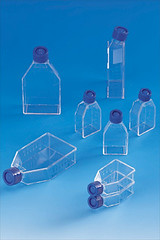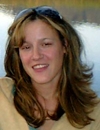 Jeg var lige ved at sætte tastaturet i backgear i går da jeg fik en mail i indbakken, der fortalte, at organisationen Museer i København og Omegn (MIK i daglig tale) lige har skiftet navn til Kulturklik. Og fået en ny “visuel identitet”.
Jeg var lige ved at sætte tastaturet i backgear i går da jeg fik en mail i indbakken, der fortalte, at organisationen Museer i København og Omegn (MIK i daglig tale) lige har skiftet navn til Kulturklik. Og fået en ny “visuel identitet”.
Formanden for MIK, Frank Allan Rasmussen, siger, at han er “yderst tilfreds” med det nye navn og identitet.
Jeg er meget uenig. Navnet Kulturklik er udtryk for en dyb misforståelse af, hvad museer handler om.
Museer handler ikke om at klikke sig ind på kultur på webben. Det kan godt være at nogen mener at man er med på vognen ved udsende digitale identitetssignaler. Men i min optik er man dermed snarere med på slæbevognen.
Efter femten år af digital eufori, begynder vi at forstå at museerne handler om noget hinsides web- og klik-kulturen. Museerne er locations for alle dem, der er ved at blive trætte af den digitale støj. Museerne er arnesteder for en post-digital materiel kultur.
Museer i København og Omegn er et godt retronavn. Det er ikke særlig spændende, det er ikke spor sexet eller cool. Men det er lige præcis, hvad de fleste museer i København og omegn faktisk handler om.
Det værste med navnet Kulturklik er altså, at det overfladisk set oser af ny og spændende digital “progressivitet”, men i virkeligheden er det dybt konservativt. Det peger bagud istedet for fremad. It’s so much yesterday. Om igen!
Læs mere om den nye “identitet” her.

 This year’s
This year’s  Here’s the list of speakers at the 15th biannual conference of the European Association of Museums for the History of Medical Sciences, to be held at Medical Museion, 16-18 September 2010, on the theme ‘Contemporary medical science and technology as a challenge to museums´.
Here’s the list of speakers at the 15th biannual conference of the European Association of Museums for the History of Medical Sciences, to be held at Medical Museion, 16-18 September 2010, on the theme ‘Contemporary medical science and technology as a challenge to museums´.
